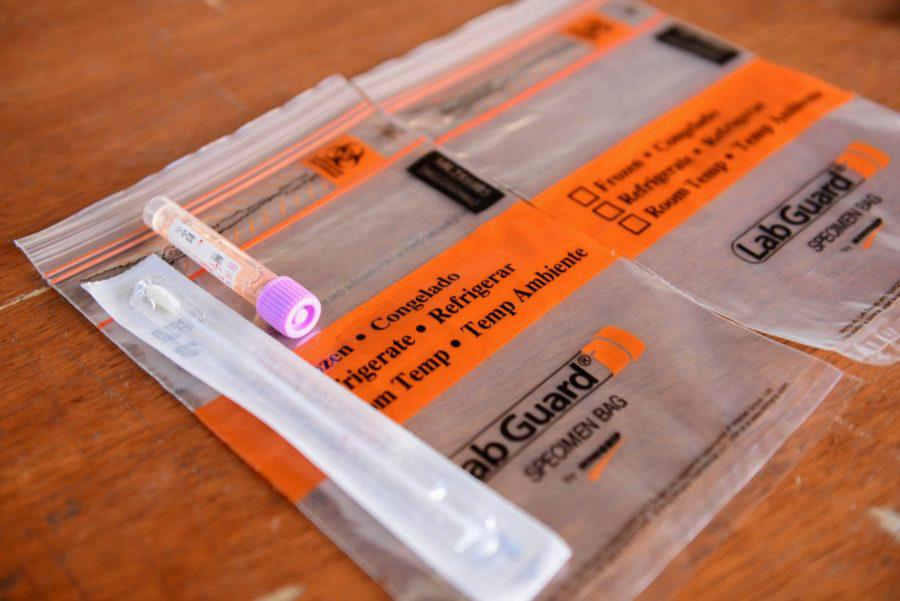Pitt adds 38 new COVID-19 cases since Thursday
November 24, 2020
Pitt added 38 new COVID-19 cases, composed of 34 students and four employees, between last Friday and Monday, with 52 students currently in isolation. This comes after an increase of 56 cases between last Tuesday and Thursday.
This is the fifth case report since Nov. 9, when the University moved back to the Elevated Risk posture and told students to shelter in place immediately. The University previously advised students to complete a 10-day shelter-in-place period starting Nov. 12 before leaving for Thanksgiving break, though Pitt will allow students to attend in-person classes and other academic activities.
The case report also arrives after the Allegheny County Health Department continues to report an ever-increasing number of cases, with new single-day case records set and then broken for the past several weeks. Pitt will issue its next COVID-19 case report on Dec. 4.
Students will have access to at-home COVID-19 tests after they go home for Thanksgiving break, Dr. John Williams, the head of Pitt’s COVID-19 Medical Response Office said. The University has partnered with testing company Quest Diagnostics to offer one optional, self-collected COVID-19 test to all students, if ordered by next Monday.
Data collected by The Pitt News. Original data collection by Ryan Yang, Online Visual Editor. Archival data by Spotlight PA and the Philadelphia Inquirer. Graph by Jon Moss, Editor-in-Chief.The COVID-19 Medical Response Office said case numbers remain “elevated, yet steady,” and strongly advises community members to stop all social, non-essential travel in the coming weeks and over the holiday season, including travel for Thanksgiving.
“Since this is a time of giving thanks, we want to end this update by expressing our appreciation for your hard work, patience and partnership this term,” the office said. “It hasn’t been easy, but you have remained committed to the Power of Pitt and taking care of one another.”
The office also thanked community members who wore a face covering, practiced safe physical distancing, washed their hands, minimized new close contacts, avoided large crowds, participated in ongoing testing efforts and encouraged people around them to do the same.
“We have said it before, but it bears repeating: Your smart decisions and behaviors have been pivotal to our shared success,” the office said.
The University has had 655 students and 64 employees test positive since June 26, with 603 students and 47 employees recovered thus far.
There are 52 students currently isolated at home or in Pitt’s isolation housing, which is reserved for those who have either a confirmed or suspected COVID-19 infection. Pitt has a total of about 300 isolation beds.
The presidents of student and faculty governments have expressed concerns about the recent rise in cases. Both came out against Pitt’s mid-October move to lower its risk posture from Elevated to Guarded.
“I never thought we should have moved down,” Chris Bonneau, the president of the University Senate, said. “Just because we’re having success doesn’t mean we can loosen up — that success means that our vigilance is working.”
Eric Macadangdang, the president of Student Government Board, urged students to “please, please, please shelter in place.”
Chancellor Patrick Gallagher praised how closely most students have followed mitigation measures at November’s Senate Council meeting.
“I’m still quite impressed with our students and how seriously they’re taking this, but we did notice a modest increase,” Gallagher said.
Gallagher added that the University is “well within its capacity to respond” to the rise in cases.
“This is kind of exactly what we designed this for,” Gallagher said. “Nothing’s broken down yet.”
Pitt has been using the new Flex@Pitt teaching model, which allows students to experience classes “in person, remotely, synchronously or asynchronously.” Provost Ann Cudd announced Sept. 30 that the Flex@Pitt model will continue into the spring semester as the pandemic continues, and the spring will have an adjusted schedule.
Pitt has implemented a systematic, random testing strategy, where it has said it will test several hundred students each week on Mondays and Wednesdays. Out of 285 students without COVID-19 symptoms randomly tested Wednesday, four were positive, increasing Pitt’s total prevalence rate from 0.41% to 0.44%.
The University has implemented a variety of new policies due to the pandemic, though some community members question whether the safeguards are sufficient. All students were asked to shelter in place for seven days before and after arriving in Oakland, though officials said Pitt would not track whether or not students had completed the shelter-in-place period. Pitt has also planned testing of students to monitor the virus’s spread, required students, faculty and staff to complete COVID-19 training and imposed strict penalties for violations of health guidelines.
Kenyon Bonner, the vice provost and dean of students, said student organizations who host a party or event can face suspension, and students hosting large parties can be suspended.
Students living on campus who attend large parties can have their housing suspended for the semester, and students living off campus can be switched to persona non grata status, preventing them from entering University buildings or property.








